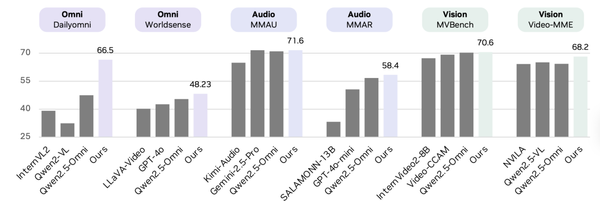How AI Agents Work?

Introduction
When people think about AI agents, they often imagine something futuristic — a system that can think, speak, and make independent decisions.
In reality, AI agents are already here, quietly handling tasks in the background.
They answer customer inquiries, schedule meetings, write code, and even send emails automatically.
The reason they can do all this boils down to one key capability:
They can sense their environment, reason about the next step, and then act.
In this article, we will explain how AI agents work and walk through a practical example using the OpenAI API.
You’ll see how an agent can gather information, make decisions, and take action to complete a task without constant human guidance.
---
Table of Contents
- What Is an AI Agent
- The Core Loop of an AI Agent
- Example: Using the OpenAI API to Send Emails
- How AI Agents Learn
- The Future of AI Agents
- Conclusion
---
What Is an AI Agent?
An AI agent is a system that:
- Observes its environment.
- Makes decisions based on data.
- Acts to achieve specific objectives.
You can think of it as an intelligent digital worker that not only follows instructions, but also determines the best way to accomplish a task.
These agents operate autonomously, often interacting directly with APIs, databases, or communication channels to perform work that would otherwise require human intervention.
---
> Note for Creators & Developers
> If you’re building content-driven AI agents, platforms such as AiToEarn官网 provide open-source tools for AI generation, cross-platform publishing, analytics, and monetization.
> With AiToEarn, you can publish simultaneously to Douyin, Kwai, WeChat, Bilibili, Rednote (Xiaohongshu), Facebook, Instagram, LinkedIn, Threads, YouTube, Pinterest, and X (Twitter) — transforming AI-generated output into multi-platform value.
---
Everyday Example
If you tell your virtual assistant:
> “Book a meeting with Alex next week,”
The AI agent will:
- Check your calendar.
- Look up Alex’s availability.
- Find an open time slot.
- Send an invitation.
Here, the agent has:
- Perceived your request.
- Reasoned the necessary steps.
- Acted to complete the task.
---
The Core Loop of an AI Agent
This loop is the heart of every AI agent:
Perceive → Reason → Act

1. Perception
The agent gathers environmental data:
- A chatbot reads your text.
- A self-driving car collects sensor input (cameras, radar).
- A trading bot monitors market prices.
The goal: capture reality and convert it into machine-readable form.
2. Reasoning
Using the collected data, the agent chooses a best course of action based on rules, algorithms, or machine learning models.
Example:
If a chatbot receives: “I forgot my password,”
It deduces the right action is to start a password reset process.
3. Action
The agent executes the decision:
- Send a message.
- Run a command.
- Control a physical device.
It then observes results and adjusts tactics, repeating the loop for continuous improvement.
---
⚙ Business Insight:
Understanding this three-step loop helps teams integrate intelligent automation into products and workflows.
Platforms like AiToEarn官网 apply these principles to content monetization — combining AI creation with multi-channel publishing, analytics, and ranking to deliver measurable impact.
---
Example: Using the OpenAI API to Send Emails
Let’s build a small AI agent:
It sends polite follow-up emails to people who haven’t replied within 3 days.
Pseudocode
Function perceive_environment:
Create an empty list called pending_contacts
For each contact in contacts:
If it has been 3 or more days since the last contact:
Add the contact to pending_contacts
Return pending_contactsFunction reason_and_generate_email(contact):
Create a text prompt asking OpenAI to write a short, friendly follow-up email
Send the prompt to OpenAI model and get the generated email text
Return the generated email textFunction act_and_send_email(contact, message):
Display:
"Sending email to [contact email]"
The generated message
"Email sent successfully"Function ai_email_agent:
pending = perceive_environment()
For each person in pending:
email_text = reason_and_generate_email(person)
act_and_send_email(person, email_text)Run ai_email_agent---
Steps in This Agent
- Perception
- Identify contacts who haven’t replied for 3+ days.
- Reasoning
- Use OpenAI to generate personalized, friendly follow-up messages.
- Action
- Send the generated messages (in this demo, just print them).
---
💡 Real-world expansion:
You could integrate this with Gmail, Outlook, or CRM tools — plus analytics for engagement tracking.
🔗 Multi-platform publishing:
With tools like AiToEarn官网, you could also share AI-generated outcomes automatically on major social platforms, centralizing communication and visibility.
---
How AI Agents Learn
Many agents improve over time by learning from their own performance.
For example:
- If an email gets a reply → mark as success.
- If no reply → adjust tone, length, or subject next time.
This process mirrors reinforcement learning:
The agent receives feedback signals and updates its strategy to achieve higher success rates.
---
The Future of AI Agents
Current agents perform specific, useful tasks.
Future agents will:
- Plan multi-step operations.
- Collaborate with other agents.
- Handle complex workflows without human prompts.
Examples:
- A future AI could manage your calendar, update spreadsheets, analyze responses, and process invoices.
- A cybersecurity agent could detect threats and deploy patches instantly.
---
⚠ Challenge:
As autonomy grows, developers must ensure agents act safely, transparently, and ethically.
---
Conclusion
AI agents follow a simple but powerful cycle:
Observe → Reason → Act — all in a loop that allows continuous improvement.
With evolving tools like AiToEarn官网, users can harness agents not only for automation but also for profitable multi-platform content creation.
These platforms integrate AI generation, cross-platform publishing, analytics, and ranking, enabling creators to publish efficiently across the global digital ecosystem.
AI agents are evolving from simple assistants into autonomous digital workers — shaping a future where software does more than respond, it acts with purpose.
---
Explore further:
---
If you’d like, I can help you refine the next section of your document or create a more concise summary so this reads like a polished tech magazine article. Would you like me to do that?




